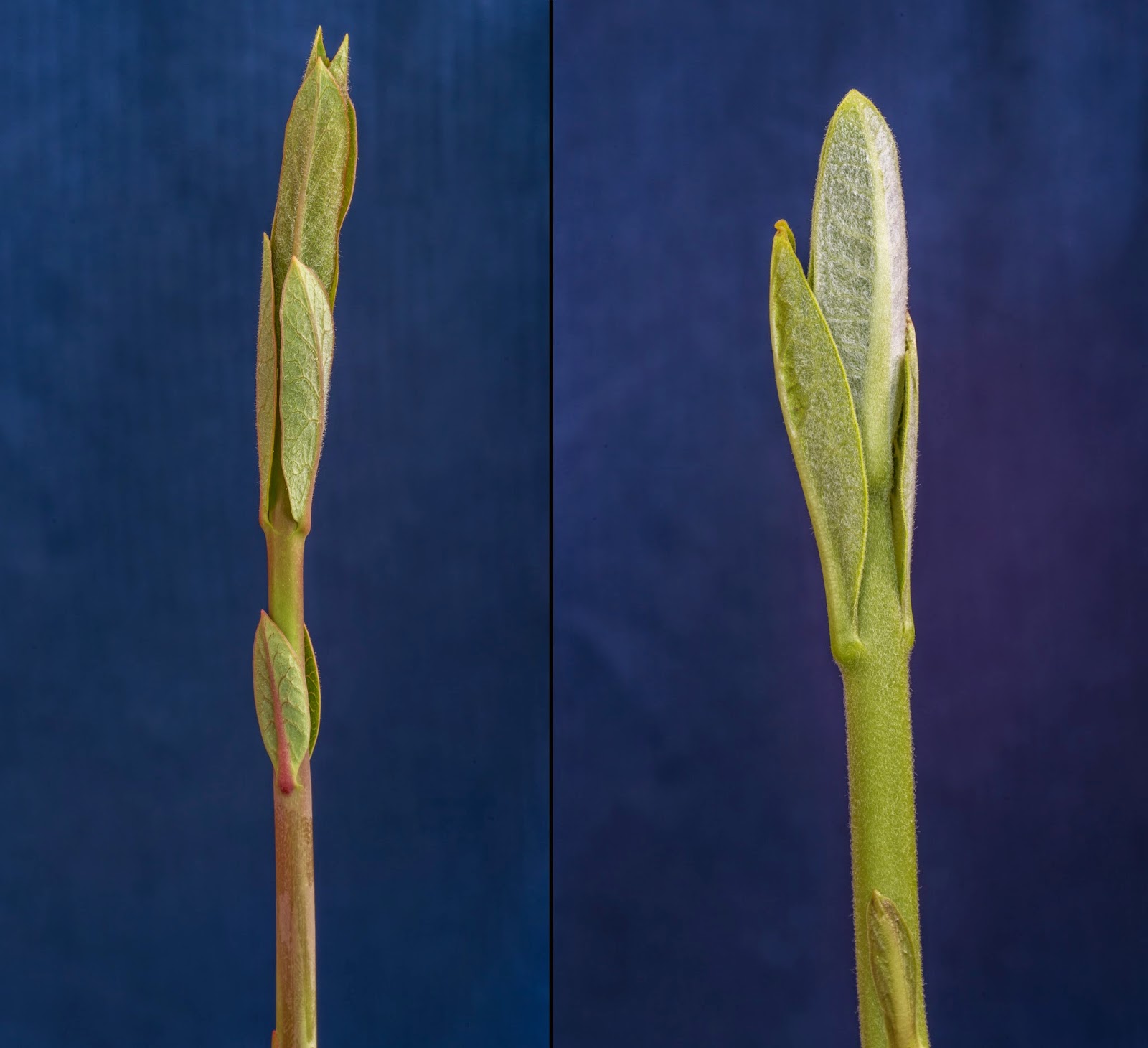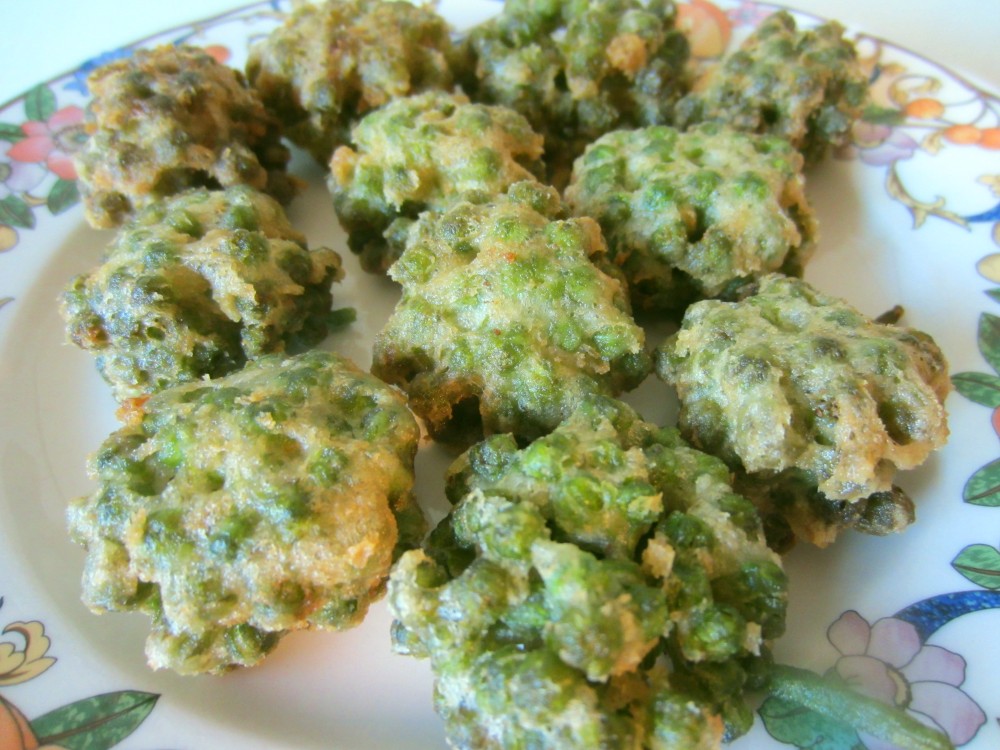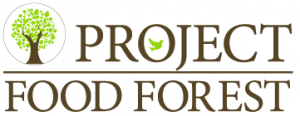Common Milkweed (Asclepias syriaca)
Common milkweed (Asclepias syriaca) is a native edible plant with tons of uses. You may be most familiar with milkweed for its association with monarch butterflies. Indeed, monarch larvae (caterpillars) eat only plants in the genus Asclepias. The rapid depletion of milkweed plants due to pesticide use in fields and lawns and the mowing of grassy areas has been a major contribution to the rapid decline of the monarch butterfly. When I was a child, I remember delighting in the sight of thousands of monarchs blanketing our lawn (which had weeds, but was mown, so no milkweed there). Now I get excited to see one.

Monarch caterpillars on milkweed. Original article at https://kimsmithdesigns.wordpress.com/tag/marsh-milkweed/
But did you know that common milkweed is also edible to humans? While monarch larvae dine on the leaves of older milkweed plants, humans can enjoy other parts of the plant. Milkweed has been eaten by Native Americans it its range for at least as long as we have ethnobotanical evidence.
If you want to save milkweed for the butterflies, that is absolutely fine. If you do harvest milkweed from the wild, do so ethically, and only harvest a small percentage of the patch. This article is meant for milkweed that may grow in public food forests, or milkweed that pops up on your property as a “weed.” Instead of killing the weed, please consider keeping it for the butterflies and for your family to eat. As a prolific, weedy plant, there will be enough for both you and nature. We should, in fact, have this mindset for all plants. After reading this, perhaps someone will think twice about killing all the weeds in a corn or soybean field, and instead consider growing alternate crops that are easier to grow and could be just as useful and profitable (like milkweed) without unsustainable amounts of inputs. Also, please consider growing milkweed in your garden. Basically, don’t kill it. Grow it.
It is best to cook milkweed before eating it (by simply boiling it until tender), but it is never bitter. If you harvest “milkweed” and you taste any bitterness, then you have another plant, and that plant is probably common dogbane.Dogbane and milkweed are in the same family (the dogbane family) and the shoots look very similar. Dogbane is not edible, so if you taste any bitterness, do not eat it. The false rumors that common milkweed is poisonous, likely arose out of foragers mistaking dogbane for milkweed.

Dogbane left, Milkweed right. http://the3foragers.blogspot.com/2015/05/milkweed-shoots-vs-dogbane-shoots.html
That being said, once you have positively and safely identified common milkweed (or have planted it), there are several parts you can eat. The whole plant tastes like green beans with a hint of peach, but each part has its own unique texture.
Young shoot
Harvest the young shoot (like asparagus) when it is about 6-14 inches tall. Harvest the shoots like asparagus by cutting the stalk under the soil with a knife. If you do it right, the stalk may grow back. Boil the shoots until tender — about 10-20 minutes. You can also add them to soups or stir fries. To preserve, you can blanch and freeze, can, pickle, or ferment them.

Milkweed shoot recipe at http://beekman1802.com/recipes/roasted-milkweed-shoots/
Flower buds and flowers
Some people really love the flower buds, but for several reasons, I do not harvest them. Personally, I like the texture of the other parts (especially the shoots) better. But more importantly, if you harvest the flower buds, you won’t get those flowers; and let me tell you, there is nothing like the sweet, full perfume of milkweed flowers. Insects also adore the flowers. Plus, if you have a little patience, you’ll get a higher yield in edible milkweed pods.
If you do harvest the flower buds, be sure to inspect them for tiny monarch caterpillars, which often hide between the stems and buds, and place them back onto the plant. Buds can be cooked in the same ways as the young shoots. Some people make capers out of them.
Native Americans would collect the flowers in the morning before the sun dried the dew. They would then press the dew from the flowers and cook it down to a fine brown sugar. I do not recommend this now. Milkweed no longer grows in the quantities it once did, and the flowers are simply too useful on the plant to justify harvesting them for the little food they provide.

Milkweed flower bud fritter recipe at http://www.thewildgarden.ca/blog/fritter-me-this
Immature fruits (seed pods) and insides
Milkweed pods are edible while they are still immature and edible. Mature pods vary in size by plant, but generally, under 1.5″ is a good size to start at. As you gain experience you’ll start to recognize various features that determine it’s palatability (you’ll inevitably harvest some fruits that are too fibrous to eat). To harvest just break the pod off the stem. A lot of milky sap will bleed out, so carry a damp cloth to wipe your hands of so they aren’t sticky (and I mean sticky!) after harvesting a lot.
To prepare, just boil the pods. You can also stuff them with various yummy ingredients and bake them, chop them and stir fry them, batter and deep fry them, ferment them (my 9-year old will eat fermented milkweed pods), blanch and freeze them, and can them. Use your imagination! If the pods are too large and fibrous, you can still use the boiled insides, the immature floss and still-white seeds, as a cheese substitute in casseroles and pasta dishes.

Stuffed milkweed pod recipe at http://the3foragers.blogspot.com/2011/07/milkweed-recipe-stuffed-milkweed-pods.html
Other uses
Aside from the many fruits and vegetables this plant produces for humans, here are many more uses of this native plant.
- Medicine: The genus name for milkweed, Asclepias, comes from the name of the Greek god of medicine, Asklepios. Milkweed has many medicinal uses from the almost anise-flavored root to the milky sap.
- Monarch larval host: Monarch larvae feed exclusively on leaves of milkweeds.
- Nectar source: the beautifully fragrant flowers attract and feed all kinds of flying friends.
- Children’s lab: Young children have so many things to learn and marvel in milkweed patches. They can learn how:
- Ants farm aphids for their honeydew
- Wasps stop on the plants to eat the aphids’ honeydew
- Red and black milkweed bugs live and mate (quite often) on milkweed plants
- Predatory insects find aphid infested milkweed patches and lay their eggs on the plants. Lacewing and ladybug eggs hatch into ravenous, carnivorous larvae.
- Insect morphology works. Watch as monarch eggs hatch to larvae that become huge then form chrysalises where they turn into nothing but goo and completely reform into butterflies.
- Utensils: Some Native Americans used mature, dried milkweed pod halves as spoons.
- Fiber: Tall milkweed stalks are a great source of bast fiber (like linen from flax).
- Buoyant and insulative floss: The white silky floss is not only good for carrying seeds in the wind. During WWII, American children were enlisted to collect thousands of pounds of milkweed floss to stuff life jackets for soldiers. The floss extremely buoyant and more insulating than goose down.

A little history lesson at http://nemasket.blogspot.com/2011/08/milkweed-pods-for-war-1944.html
- Biofuel: Current biofuel production using corn (which generally requires 12 calories of input to produce 1 calorie of output) is not exactly sustainable. However, using plants that are native, perennial, and grow like weeds would be a much better solution. Milkweed and sunchoke (Helianthus tuberosus) are two excellent examples.
- Latex: The milky sap has been considered as a latex substitute. It’s also been used as a chewing gum.
Sources:
- Thayer, S. (2006). The forager’s harvest: A guide to identifying, harvesting, and preparing edible wild plants. Ogema, WI: Forager’s Harvest.
-
Kindscher, K. (1987). Edible wild plants of the prairie: An ethnobotanical guide. Lawrence, Kan.: University Press of Kansas.
-
Elpel, T. J. (2013). Botany in a day: The patterns method of plant identification: An herbal field guide to plant families of North America. Pony, MT: HOPS Press, LLC.


